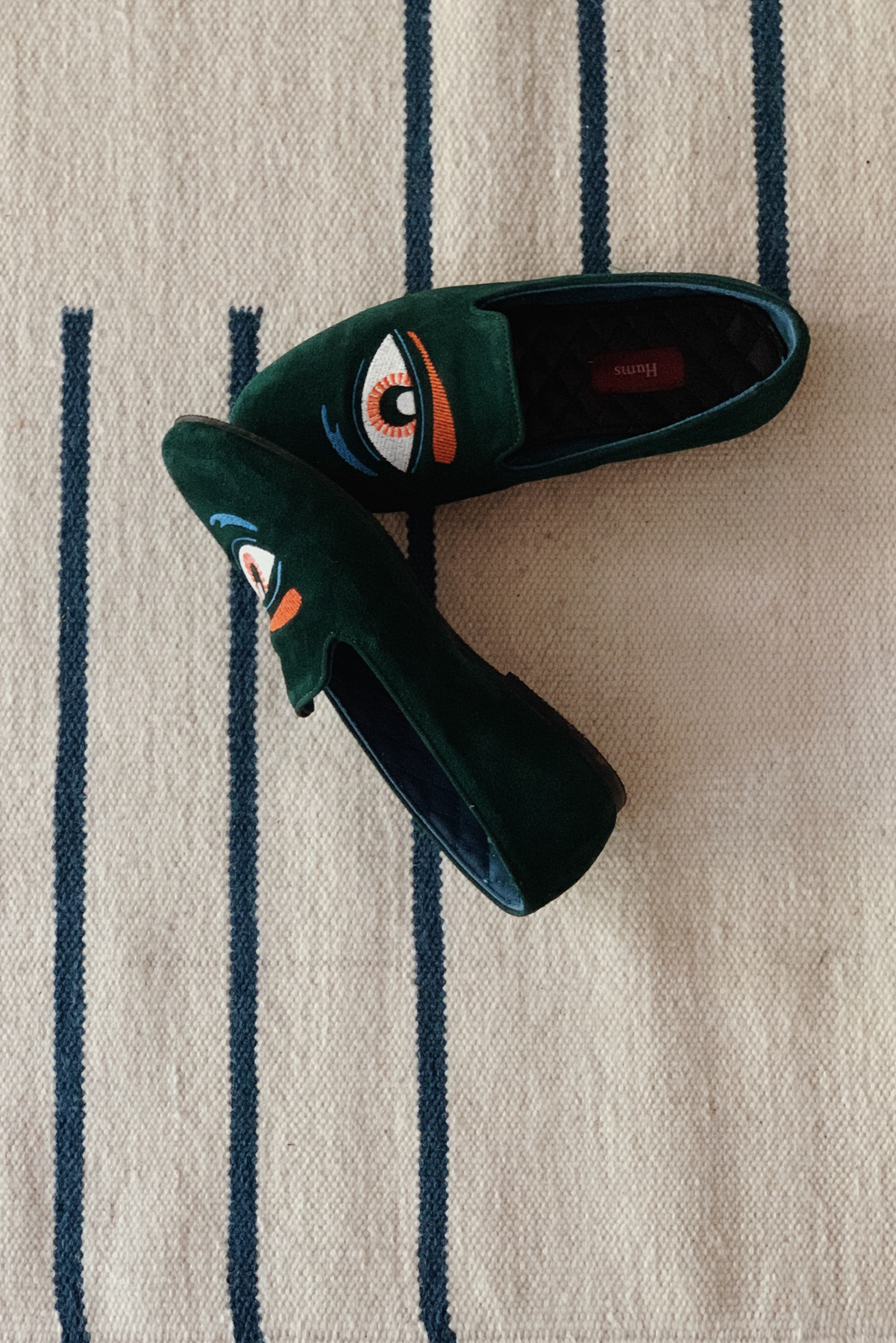Have you ever been a guest in a Scandinavian home? If so, you’ve probably noticed that it’s de rigueur to remove your shoes and pad around the home in bare feet, socks, or, if you’re lucky, a pair of slippers. Slippers and house shoes are common in Scandinavian homes. Usually the residents of the house have their own slippers, which are positioned by the door to be put on immediately when entering. Sometimes people even have a few slipper choices for visitors. Now that’s service!
Slippers and house shoes can be simple – almost a sock with a bit of traction – or more high-end. Hums, a Swedish brand that produces slippers and house shoes (as well as espadrille sandals), makes the kind of footwear that will make you feel glamorous; their products are extremely well made and hold up for years, meaning that you won’t have to replace your slippers or house shoes season after season.
Because they have rubber soles, you can wear your Hums out of the house if you choose, but they are meant to be worn in the home as a kind of shoe-that’s-not-really-a-shoe.
There’s something so satisfying about taking off your outdoor shoes and slipping your feet into something warm, cosy, and chic. That’s the love story of the Scandinavian house shoe: it brings together the domestic and the refined in perfect harmony.
What is the difference between slippers and house shoes?
House shoes and slippers are both worn in the home. Slippers generally have an open back so they can be easily slipped on the foot, while house shoes have a back. Both can have either soft or rubber soles.
 |  |
We spoke with Hums co-founder and creative lead Mikael Söderblom about slippers, house shoes, and why Scandinavians remove their shoes in the home:
Tell us about the inspiration for HUMS
In early to mid-19th century, slippers and house shoes had totally different places in our homes. Slippers were not just about being warm and cosy, but also feeling smart and well-dressed. This was something we felt was missing on the market before starting Hums.
My grandfather, Åke Söderblom, was a famous Swedish actor in the mid-century. He really mastered the art of dressing casually but with style, even when being at home or in his loge. He never dressed down. A pair of stylish but comfortable slippers was his favorite accessory.
This inspired us to create the Hums slipper with the same kind of thin sole, low heel, and slim silhouette.
When did you start Hums? What was the process of starting your company like?
When we started, we thought Hums would be the perfect hobby. To play around with different patterns and materials, creating a perfect slipper. But the more we worked with the concept and the more often we wore our products, the Hums slippers just grew on us.
Since we live in a country where the majority of people take their shoes off when going inside the home, Hums was clearly a product that found its natural place in the hallway. Once they begin wearing the slippers, people say they can’t live without them.
 |  |
Please talk about your sourcing and production practices
We started producing Hums in Asia. After having problems with the long delivery times, however, we decided to find a factory closer to home. We found a small but dedicated factory in Spain, who saw the potential in Hums and invested a lot of time in us to help the brand grow. So today, Hums slippers are handcrafted in Spain, in materials such as calf leather, finest suede, silk lining and rich embroideries. Having the factory so close by means that we can visit more frequently, so we feel very in touch with the whole process.
What is important to know about constructing a slipper, or a shoe in general?
The most important thing is to work with people who are experts in the kind of shoe you want to produce – particularly in the factory setting. You need to find someone who understands your specific product category and take you through the process of choosing the right materials. If you don’t get this support, you’d better be an expert yourself, which we were not at the time we started. I think today, I’d say we are experts.
Is the slipper or house shoe important to Scandinavian culture? Why or why not?
In Sweden everyone takes their shoes off when they come home. We just haven’t had the tradition of wearing shoes inside. And to be honest, until recently there haven’t been that many alternatives, so many of us just glides around in socks, which doesn’t feel so comfortable, nor stylish, if you are having dinner guests.
Why do you think people take their shoes off before coming into a house in Scandinavia?
I would say its due to our cold and wet climate; the shoes are often too dirty to wear inside. And our typical clean and minimalist interior design heritage doesn’t go well with well worn boots, or the dirt that they drag into the home.
 |  |
What is your perception of Scandinavian style or aesthetic?
Typically, the Scandinavian style is very bright and spare. We love that, and shows in the clean shape of our Hums. When it comes to colors and patterns, however, we want to offer more creative and playful details. That’s very Swedish as well.
What’s next for Hums?
We will continue to offer new exciting models, colors, and patterns within the world of Hums slippers. When you do something well, keep doing it!
Find out more about Hums and get your next pair of house shoes.
Read more |

